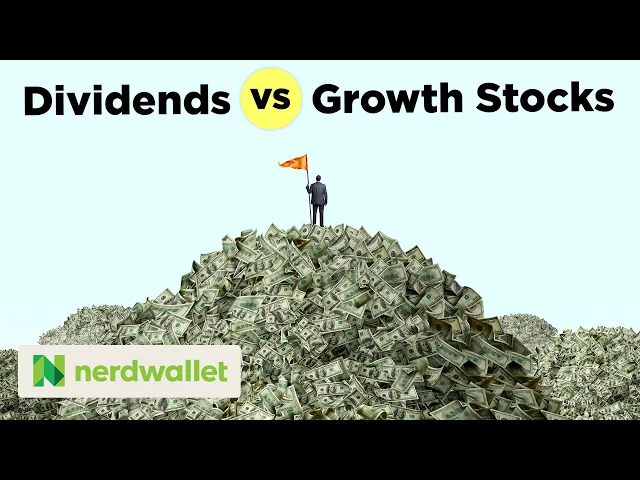20 Best-Performing Growth Stocks for April 2025
Growth stocks have faster bottom-line growth than the market. Here are some of the best-performing growth stocks this month.

Many, or all, of the products featured on this page are from our advertising partners who compensate us when you take certain actions on our website or click to take an action on their website. However, this does not influence our evaluations. Our opinions are our own. Here is a list of our partners and here's how we make money.
The investing information provided on this page is for educational purposes only. NerdWallet, Inc. does not offer advisory or brokerage services, nor does it recommend or advise investors to buy or sell particular stocks, securities or other investments.
If you’ve heard the term “growth stocks” before, there’s a good chance that it was referring to large technology companies such as Apple, Microsoft, Amazon, Tesla or Alphabet.
These are the five most heavily weighted components of the S&P 500 index, so they have an outsized influence on the overall movement of the stock market.
However, not all growth stocks are technology stocks. Over the last decade, tech stocks have performed particularly well, leading the S&P 500 to weight them more heavily. But growth stocks can be in the health care sector, the financial sector or any other sector. What defines them is, well, growth.
What is a growth stock?
Growth stocks are stocks of companies whose revenue is growing faster than average. Growth stocks typically don’t pay dividends, reinvesting profits into their growth instead. Investors buy growth stocks with the hope share prices will rise quickly.
Growth stocks are often contrasted with income stocks, which investors buy for their consistent dividend payments, and value stocks, which investors buy in the hope that their prices will rebound from a recent setback.
» Check out our roundup of the best online brokerages for stock trading
Best-performing growth stocks
Below is a list of the top U.S.-listed growth stocks, ordered by one-year performance. To compile this list, we take into account the growth rates of revenue and earnings over the past year and prior year, as well as price-to-earnings ratios and dividend yield over the past year.
Ticker | Company | Performance (Year) |
|---|---|---|
VNET | VNET Group Inc ADR | 402.79% |
APP | Applovin Corp | 295.98% |
CORT | Corcept Therapeutics Inc | 262.07% |
PLTR | Palantir Technologies Inc | 258.80% |
EAT | Brinker International, Inc | 194.87% |
ADMA | Adma Biologics Inc | 192.57% |
KGEI | Kolibri Global Energy Inc | 160.15% |
SEZL | Sezzle Inc | 150.96% |
TGTX | TG Therapeutics Inc | 150.17% |
TIGR | UP Fintech Holding Ltd ADR | 148.69% |
SE | Sea Ltd ADR | 142.88% |
CVNA | Carvana Co | 138.67% |
SFM | Sprouts Farmers Market Inc | 138.16% |
CCB | Coastal Financial Corp | 129.99% |
DDL | Dingdong (Cayman) Ltd ADR | 118.44% |
DOCS | Doximity Inc | 111.41% |
NGD | New Gold Inc | 110.88% |
SPOT | Spotify Technology S.A | 105.31% |
LRN | Stride Inc | 103.27% |
HIMS | Hims & Hers Health Inc | 99.92% |
Source: Finviz. Stock data is current as of April 1, 2025, and is intended for informational purposes only. | ||
How to find growth stocks
You can identify growth stocks using a free stock screener like Finviz — that's how we compiled the list above.
It can be helpful to do some holistic research when trying to identify potential growth stocks: What are the larger market trends? What industries do you predict will go through significant periods of growth over the next few months or years?
A great example of this type of market growth is the AI industry. Over the last few years, AI technology has become widespread, and many AI stocks have massively increased in value. But the problem with investing in any singular stock is that you have to see those trends coming before they happen — and people, even professional investors — are statistically unlikely to accurately predict the future.
» Learn: How to research stocks
To easily find growth stocks with a screener, filter for high earnings per share (EPS) growth and revenue growth (sometimes called sales growth). You can also screen for high price-earnings (PE) ratios and non-dividend-paying stocks — as we did above — to further refine your search to growth stocks that have share price momentum and are aggressively reinvesting money in their own growth.
Should you buy growth stocks?
That depends on you and your investing goals. The stocks above may be beating the market right now, but that doesn’t mean that you should go all-in on them. Past performance does not predict future performance, and picking individual stocks can be a risky business.
Many investors instead buy index mutual funds and exchange-traded funds, which bundle hundreds or thousands of stocks into a single investment. Index funds, by definition, don’t beat the market — they move with the market. But since most investors picking and choosing individual stocks underperform the market anyway, performing as well as the market tends to be the easier and more lucrative option.
The S&P 500 index, which contains roughly 500 of the largest publicly traded companies in the U.S., has returned an average of about 10% per year since 1926. That makes it a powerful tool for compounding wealth over the long term. However, it’s worth emphasizing that 10% is the average annual return of the index. In some years, the index does much better than that, but in other years, it does much worse.
Plus, the S&P 500 index features several of the growth stocks we mention here.
During downturns, skilled stock pickers can theoretically outperform the market indexes by investing some of their money in individual companies that buck the negative trend, like the ones shown above. But be careful: Studies have shown that individual investors usually underperform the market indexes.
Other investors harness the power of index funds and individual stocks with the “90/10 rule.” They invest no more than 10% of their portfolios in individual stocks and keep the rest in low-cost index funds.
Growth stocks vs. dividend stocks
One of the biggest differences between growth stocks and dividend stocks is that growth stock companies devote all their extra income to growing their business, which can increase the value of your stock, whereas dividend stock companies take their extra income and pay it out to investors in the form of dividends.

» Growth stock ETFs? Check out the best ETFs in terms of long-term returns.
The author owned Alphabet stock at the time of publication.


